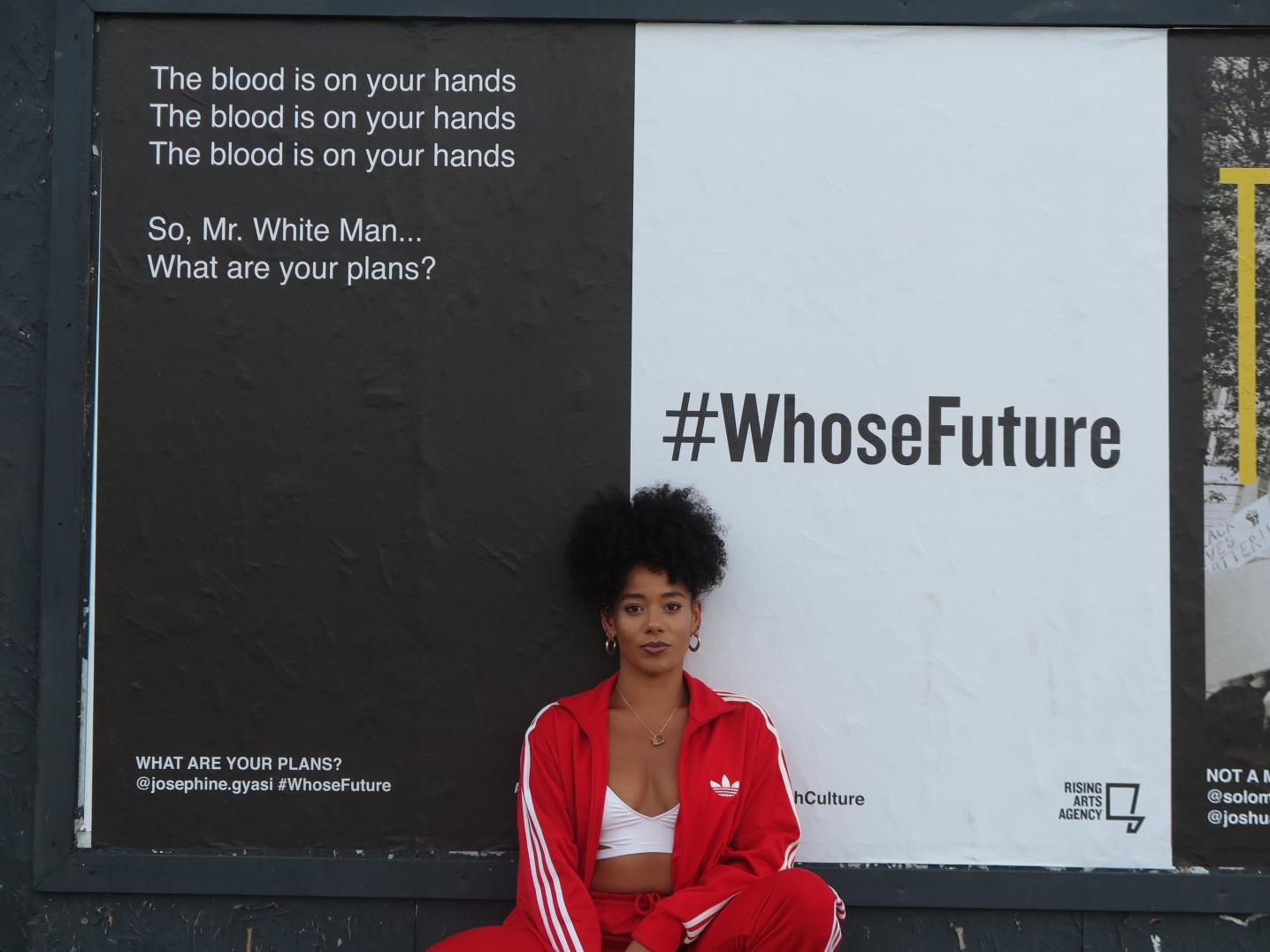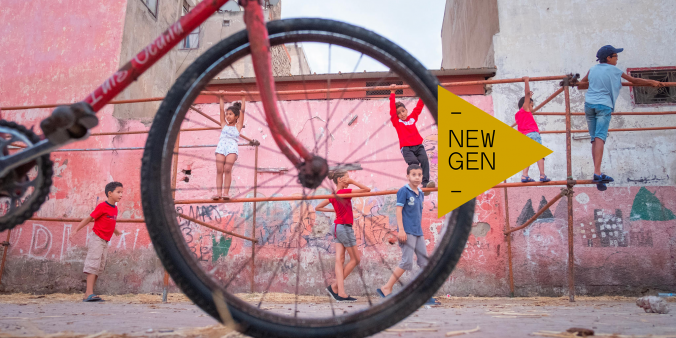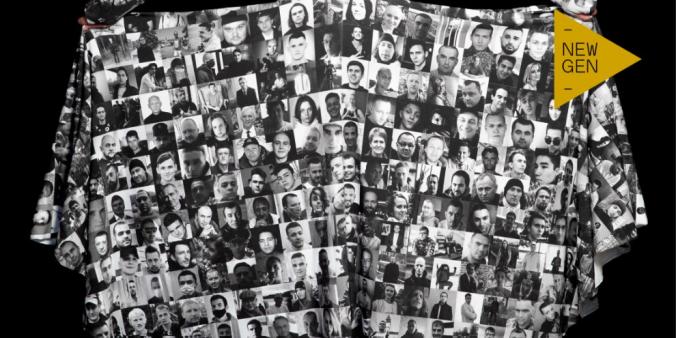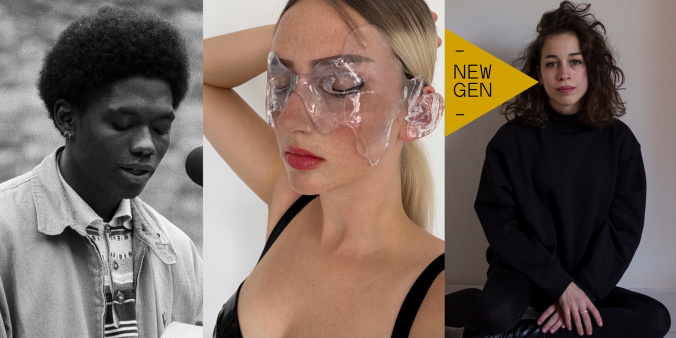
DutchCulture asked 6 journalists from around the world to catch impressions of the ripples created by young creatives, makers, artists, or cultural professionals in their cities. In this series of articles, we travel to Warsaw, Casablanca, Paramaribo, Lyon, Shanghai and Bristol to see the world from the perspective of a new generation of artists and cultural professionals. What’s specific about the way they shape and create their work? What themes are they putting forward and what's their take on working across borders?
Episode #3 - Bristol
Priyanka Raval is a Bristol-based freelance journalist, focusing on social justice and investigative reporting. She also works for Rising Arts Agency, a community of young people mobilising for social change through the arts. She writes this article after the two-year anniversary of the historic toppling of the statue of slave trader Edward Colston during a Black Lives Matter march in Bristol on 7 June 2020. This piece is about artists who want to claim public space in the city, from those in power to the people.
A radical reputation
Let me introduce you to Bristol. It’s important to set the scene. Bristol has a radical reputation - from Extinction Rebellion to anarchist bookshops to Stop the War marches. The city is seen as a bastion of progressive and anti-establishment beliefs, a ’lefty’ corner of the South-West of England. There’s truth in the rumours - I speak as a born and raised Bristolian and local reporter. Social movements and protests are my ’beat’ and there has never been any shortage of events to report on.
We are the city that values our independence. A full-scale riot broke out in 2011 when a Tesco supermarket was built in a former squat, amidst a stretch of independent shops in the vibrant district of Stokes Croft. We even have a local currency, the Bristol Pound, which can only be spent in local, independent businesses. When the Government last year proposed legislation to introduce tougher policing and sentencing measures, involving restrictions on protesting, it is no wonder that Bristol took to the streets en masse; with our “Kill the Bill” demonstrations boasting the most militant turnouts in the country.

Dark history
But beneath this progressive, counter-cultural scene lies a dark history. Bristol gained much of its wealth from the slave trade. According to local historian Professor David Olusoga, from 1728 - 1732, Bristol dispatched more slave-trading expeditions than any other British port. Between 1698 and 1807 (the prohibition of the British slave trade), around 20% of the slave-trading voyages that left British ports embarked from Bristol - between them carrying an estimated half a million Africans into enslavement.
The legacy of the detestable slave trade is ingrained into the city’s civic fabric. Street names, schools and buildings bear the name of former slavers. A fact that sits uncomfortably with the values of many Bristol residents, and the significant Afro-Caribbean community who live here.
The symbol of this struggle between the city’s reprehensible history and the ethics of today became the statue of 18th-century slave trader Edward Colston, which stood slap bang in the City Centre, overlooking the harbour from where his ships would depart. Adding insult to injury, the plaque beneath him described him as “One of the most virtuous and wise sons of the city.” No mention of his involvement in the Royal African Company, active campaigning for the continuation of slavery and the 84,000 Africans he oversaw the trafficking of. This statue has been the centre of a furious debate for decades.
Until 7 June 2020, when Bristol made headlines the world over when protesters pulled the statue down and rolled it into the harbour during a Black Lives Matter march. Those protestors achieved with direct action what countless petitions had failed to do. In the face of local government inaction, protestors took matters into their own hands.
The act of pulling down the statue was a decisive move to retake ownership. And the battle for public space rages on, with young artists as the vanguard. Armed with imagination, creativity, spray cans and rollers, they are leading the way in developing a new vision of the city.
The People’s Platform
Of course, once Colston was pulled down, there was the question of what to do with the empty plinth. Enter poet, educator, activist and agitator Lawrence Hoo. Soon after the toppling, Hoo launched The People’s Platform, a public art project inviting people from the city to submit designs for the empty plinth which could “reimagine how Bristol’s history and common values can be best reflected”.
Hundreds of designs were submitted. A diverse, intergenerational panel of community members from all of Bristol’s postcodes then selected submissions that would be brought to life in the digital realm. On the one-year anniversary of the toppling, the People’s Platform showcased the first sculptures and designs on the empty plinth through the power of augmented reality (AR). Anyone with a smart device near the plinth can scan a QR code and see the different designs. Without having to download an app, you could experience and explore the designs from 360 degrees, along with information about the designer and the inspiration behind the piece. “Modern communities want their environments to reflect our values. These virtual statues in the heart of the city reflect the values of Bristol today,” Hoo said.
The project was the brainchild of CARGO classroom (Charting African Resilience Generating Opportunities), an online educational resource dedicated to developing a global understanding of African and African diaspora history, founded by Hoo and Chaz Golding in 2019. Jazz Thompson, an artist who has contributed to the project, said: “To partake in art in public spaces, it’s something you’re often told not to do. The ownership of the plinth has now completely shifted.”

At the time I interviewed Professor Antonia Layard at the University of Bristol. “We now widely agree that neither heritage nor history is static. Contexts change and statues could reflect that,” she said. “Centralised decision-making over the local public realm will not help us create dynamic, diverse public spaces.”
The People’s Platform helped articulate and imagine a new narrative for Bristol that refused the iconography of racism. Crucially, they showed how the design of public space could be democratised, co-created, inclusive and representative of Bristol’s diversity. The virtual occupation of space is clever, it evades Government control and local bureaucracy and puts power into the hands of the people. Moreover, the versatile virtual realm of the People’s Platform can reflect the changing attitudes that come with the passage of time in a way that the rigidity of a statue simply cannot.
#WhoseFuture
In that summer of 2020, a creative agency sprang into action: Rising Arts Agency. It was established in 2016, with a mission to empower Bristol’s underrepresented young people to fulfil their creative ambitions and to affect wider social change through the arts. They now make up a diverse community of artists, activists, producers, facilitators, illustrators, photographers, filmmakers and more.
“We got a call asking if we would be interested in pulling together a huge, public-facing campaign celebrating culture in the city with just over 4 weeks to make it happen,” explains co-director Euella Jackson. “Initially I thought it was impossible, but then a few weeks later George Floyd was murdered, the Colston statue was pulled down and this was no longer an opportunity we could turn down. #WhoseFuture was our response.” Within weeks 37 artists created 370 posters and 9 billboards that exploded onto the city’s streets.
“Rising Arts Agency has always dreamt of taking up space in the city, shouting loud and proud for what we believe in. #WhoseFuture gave young artists and creatives in the city the space to address some of the specific issues we have been grappling with head-on through our work: racism, access issues, climate crisis, leadership and young people's hopes for a secure and empowering future,” Jackson continues. Emma Blake Morsi, a young artist and now Board member of Rising Arts Agency says: “This is OUR future. It is ours to be disruptive, to claim spaces as ours. To be so political that the whole landscape across all industries is forced to take action.”
Similar to the CARGO movement, ownership and having your voice heard were central to the #WhoseFuture campaign. But using billboards as the mode of art is significant, as creative practice coordinator Eli Lower explains. “Billboards are usually trying to sell you something. We're disrupting and resisting that by doing an artistic takeover of billboards.” Rosa ter Kuile, artist and Rising’s campaign manager for the project adds: “But why has it taken COVID-19, BLM and an economic meltdown to replace ad space with art?”

Bristol Womxn’s Mural Collective
That same Rosa ter Kuile, an artist who works under the name RTIIIKA, set up the Bristol Womxn’s Mural Collective to connect female and non-binary artists to take up more space in a largely male-dominated street art scene. They run mural painting meetups, ’Skate and Paint’ sessions and general paint days.
“Forming the Bristol Womxn Mural Collective is my way to connect, support and ultimately encourage more womxn to take up space,” says Ter Kuile. “Womxn’s freedom to express themselves in the streets is as important personally as it is politically. The feeling of painting in public space can be a really empowering experience. For me, creating street art is a radical act. It is about claiming space and exercising agency. The act of painting on a wall that anyone can see is an act that says ‘my voice matters’. The BWMC is about harnessing the power of the collective to feel empowered to take up literal space in the city streets.”
The collective is also campaigning for more legal spaces to paint. This would promote more advanced, exploratory art and also make street art more accessible to people of colour, who are more likely to be treated worse by the police.
Take back ownership
These three artistic collectives represent a movement in Bristol - one to take back ownership of public space in the city. It's not a completely new movement, but it is one that seems to be reinvigorated since that historic day in 2020. The collectives have their differences: how much they work with or against authority, what forms they use, and what campaigns they run. But there is a unifying mission: to empower people to have a say in the design of their public space, to have our values co-created and reflective of our communities. And most of all, to especially platform the voices of those who have historically been listened to the least.






